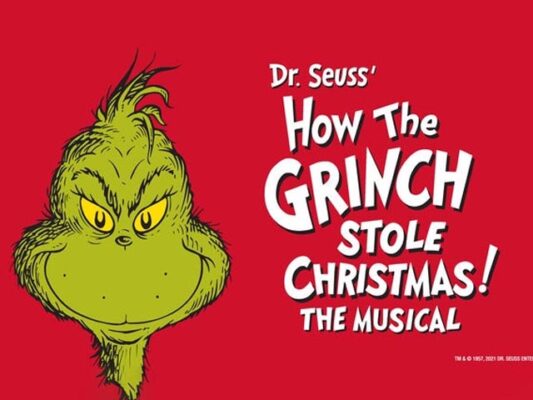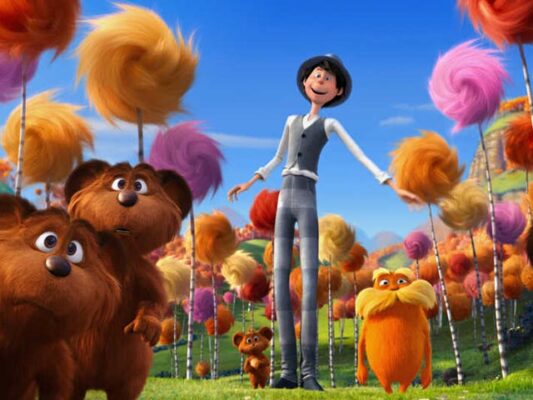Who is Dr. Seuss?
Dr. Seuss, whose real name was Theodor Seuss Geisel, was an American writer and illustrator of popular children’s books with nonsense words, playful rhymes, and unusual creatures. He was born on March 2, 1904, in Springfield, Massachusetts, and died on September 24, 1991, in La Jolla, California.

Dr. Seuss is widely recognized for his contribution as a writer, poet, and cartoonist. He wrote 46 books for children, mainly based on imaginative characters and rhymes. Some of his most popular works include “Horton Hatches the Egg,” “The Cat in the Hat,” “How the Grinch Stole Christmas!,” “Green Eggs and Ham,” and “Hop on Pop”. His books were notable for their whimsical illustrations, nonsensical language, and playful rhymes, which made them popular with children and adults alike.
The Cat in the Hat (1957)
Geisel’s career took a significant shift when, prompted by a 1954 LIFE magazine article critiquing children’s reading levels, Houghton Mifflin and Random House approached him. They requested a children’s primer utilizing a limited vocabulary of 220 words. The outcome was The Cat in the Hat, published in 1957, hailed by one critic as a “tour de force.” The triumph of The Cat in the Hat solidified Geisel’s enduring legacy in the realm of children’s literature.
Horton Hears a Who! (1954)
In 1954, Dr. Seuss, also known as Theodor Geisel, introduced readers to a timeless comic classic that would resonate across generations. This enduring tale stars Horton the elephant, an endearing character who imparts valuable lessons of kindness and perseverance. Through whimsical adventures, Geisel crafted a narrative that goes beyond its entertaining facade, embedding profound messages within its pages.
At the heart of this story is the famous line, “A person’s a person, no matter how small.” This simple yet powerful declaration serves as the cornerstone of the narrative, emphasizing the intrinsic value and worth of every individual, regardless of their size or stature. Horton’s unwavering commitment to protecting the tiny inhabitants of Whoville showcases the transformative impact of empathy and compassion, making this classic not merely a children’s story but a timeless parable with universal significance.
The enduring popularity of this 1954 creation is a testament to Geisel’s storytelling prowess and his ability to seamlessly weave moral lessons into the fabric of enchanting narratives. Horton’s journey remains a cherished exploration of friendship, morality, and the enduring power of one’s convictions.
How the Grinch Stole Christmas (1957)

“Every Who down in Who-ville liked Christmas a lot… but the Grinch, who lived just north of Who-ville, did NOT!” For over five decades, the Grinch secluded himself in a cave on the mountainside. This narrative unfolds as the citizens of Who-ville extend warmth to the Grinch, imparting the true essence of Christmas and inspiring young readers to undertake their benevolent deeds. While finding success in the 1950s and 1960s, it transformed into an instant holiday classic upon its 1966 release as a made-for-TV cartoon special. Voiced by Boris Karloff, the timeless tale of the Grinch reached new heights, solidifying its place as a cherished part of the holiday season.
Green Eggs and Ham (1960)

“Do you like green eggs and ham?” This enticing question sets the stage for a delightful journey with Sam-I-Am, as readers embark on a whimsical adventure exploring an ever-expanding list of places and companions for savoring green eggs and ham. Dr. Seuss, with his trademark creativity and playfulness, invites early readers into a world of rhythmic rhymes, vivid illustrations, and the joy of discovery.
Geisel’s masterful use of simple words and clever rhymes makes the book not only an engaging tale for young readers but also a valuable tool for early literacy development. The repetition of the question, coupled with the growing list of scenarios, adds an element of anticipation and humor that captivates children and encourages their active participation in the reading experience.
The Lorax (1971)

Dr. Seuss’s work has had a significant impact on popular culture. His books have been translated into more than 20 languages and have sold over 600 million copies worldwide. His characters and stories have been adapted into numerous films, television shows, and stage productions, including the 2000 live-action film “How the Grinch Stole Christmas!” starring Jim Carrey.
Despite his success, Dr. Seuss’s work has also been the subject of controversy. Some of his early works contained racist and stereotypical imagery, which has led to criticism and calls for his books to be banned. In recent years, some of his books have been removed from circulation due to their offensive content.
In conclusion, Dr. Seuss was a prolific writer and illustrator who left an indelible mark on popular culture. His whimsical characters, timeless stories, and vibrant illustrations have not only captured the hearts of countless readers but have also played a crucial role in shaping the literary landscape for children. Beyond the enchanting tales and colorful worlds he created, Dr. Seuss imparted valuable life lessons playfully and engagingly, making his works not only entertaining but also educational. His unique storytelling style, characterized by rhythmic rhymes and clever wordplay, has made learning to read a joyful experience for generations of young minds. The universality of his themes, addressing important values such as tolerance, acceptance, and environmental stewardship, ensures that his messages remain relevant and resonant across diverse cultures and periods. Moreover, Dr. Seuss’s impact extends beyond the pages of his books. His contributions to children’s literature have been recognized with numerous awards, and his influence can be seen in various forms of media, including animated adaptations and educational programs. The enduring popularity of characters like the Cat in the Hat and the Grinch attests to the enduring magic that Dr. Seuss infused into his creations.

